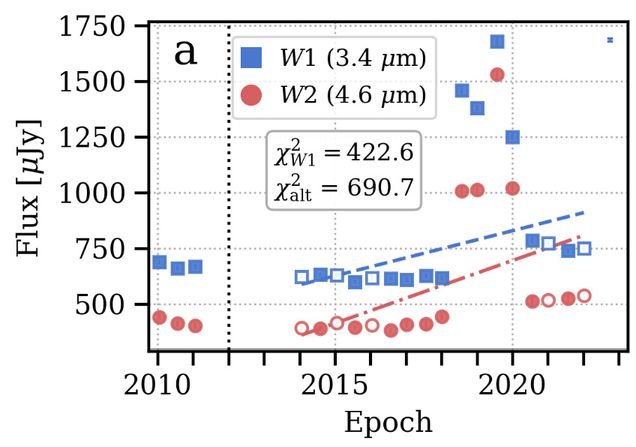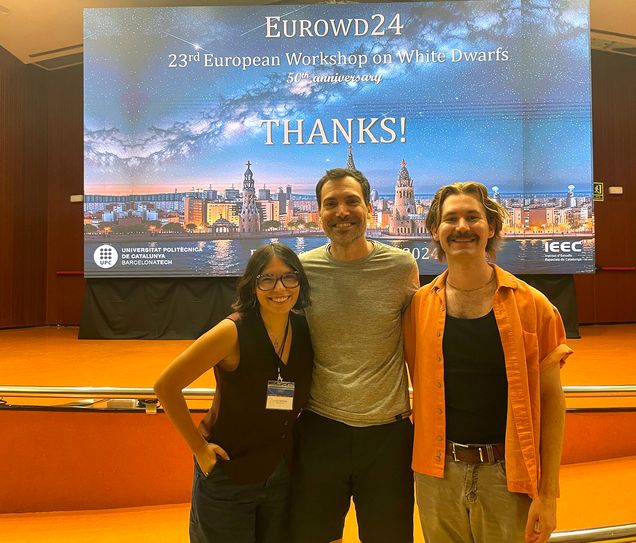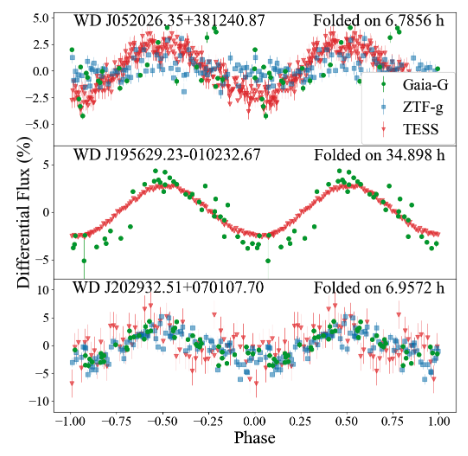The BU White Dwarf Group

Welcome to the home page of the BU White Dwarf group, headquartered a few blocks from Fenway Park in Boston, MA, USA.
Our research focuses on white dwarf stars and their connection to the endpoints of stars, binary, and planetary systems. Our work is supported by Boston University, the Institute for Astrophysical Research, the National Aeronautics and Space Administration (NASA), the National Science Foundation (NSF), and the Massachusetts Space Grant Consortium.
Recent news and group updates:
Research updates can be found below and on the news page.
Signposts of Remnant Planetary Systems

In June 2024, a manuscript led by graduate student and BUWD member Joseph Guidry (Guidry, Hermes, De et al. 2024) took a look at infrared variability of white dwarfs as seen over many years from NASA's Wide-field Infrared Survey Explorer (WISE) space telescope, discovering dozens of new infrared-variable white dwarfs that are likely to be host to remnant planetary systems. Some white dwarfs with planetary systems host dusty debris that causes an infrared excess, and collisions within the debris disks often cause infrared variability. The manuscript has been accepted in The Astrophysical Journal.
Dr. Tyler Heintz

Massive congratulations to Dr. Tyler Heintz, who successfully defended his PhD dissertation on Tuesday July 23, 2024! Tyler has been at BU throughout the entire history of the BUWD research group, and has become expert in the reliability of white dwarf cosmochronology (age-dating white dwarf stars).
EuroWD Conference, July 2024

Three members of the BU White Dwarf group attended the 23rd European Workshop on White Dwarfs, held in July 2024 in Barcelona. We will be hosting the 24th meeting in Summer 2026 in Boston!
Testing Ages Using Spectroscopy of White Dwarfs

In May 2024, a manuscript led by graduate student and BUWD member Tyler Heintz (Heintz, Hermes, Tremblay et al. 2024) announced the most detailed test of white dwarf ages measured from spectroscopic fits in wide WD+WD binaries. By comparing the age estimates of wide pairs of stars that should have both been born at the same time, using fits using both photometry and spectroscopy, Tyler provided one of the most reliable tests of current age-dating methods of white dwarf stars. This work shows that photometry + parallax (distance) measurements returns more reliable results for fainter white dwarfs. It also finds further evidence of a significant merger fraction among wide WD+WD binaries, where roughly 20% are inconsistent with a monotonically increasing initial-final mass relation. The manuscript has been published in The Astrophysical Journal.
Gaia’s Light Curve Prospects

In April 2024, a manuscript led by former BU undergraduate student and BUWD member Maya Steen (Steen, Hermes, Guidry et al. 2024) detailed one of the first systematic analyses of Gaia DR3 multi-epoch light curves, this focused on white dwarfs. Roughly 1300 candidate white dwarfs have Gaia light curves (spanning roughly 1000 days with visits roughly every 44 days). Even with that sparse sampling, Maya (who is now a graduate student at New Mexico State University) showed that periodicities as short as minutes can be detected from the Gaia light curves alone! We discover 86 new objects from the 105 target sample, including pulsating, spotted, and binary white dwarfs, and even a new 68.4 min eclipsing cataclysmic variable. The manuscript has been published in The Astrophysical Journal.